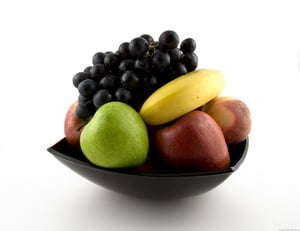We all know that too much fat in our diets is a road to health disaster and fat-free on a product label does not mean a product is also calorie free. Companies tend to replace the fat with sugar which of course can then later be stored as fat. Since too much fat can make your arteries clogged and cause heart attacks, strokes, and obesity, if not all three, it is imperative that you learn to reduce the amount you ingest.
It is a fact that most of us have too much fat in our diets. However, you still need some fat in your diet in order to remain healthy. You can safely ingest 5 to 8 teaspoons of fats and oils daily, and you will get most of these from your salad dressings, and spreads. So, the idea here is to cut back on fat not by buying expensive fat-free products that in the end may increase your problem, but to simply reduce the amount of fat in your diet with a common-sense approach.
Here is how to safely cut back the fat in your diet without buying fat-free products and, without getting rid of fat entirely.
1. Eat less red meat. Red meat tends to have more fat in it than most other meats, so eating less of it will reduce your intake.
2. Cut back on, or eliminate all together the amount of fast food that you eat. Fast food is riddled with fat, especially burgers and fries. If you make fast food a once in a while treat, or decide you simply aren’t going to eat it anymore, you will eliminate more fat from your diet.
3. Don’t purchase frozen dinners, or only do so as a treat. Frozen dinners are often full of fat, and while there are some that do not have as much fat, they often have other issues like too much sodium for example.
4. Cook healthy meals at home instead of eating out. This way you can control what you are eating and how much fat is in your meals.
5. Avoid meals from a box. While meals like Hamburger Helper and Macaroni and Cheese are convenient, they do contain extra fats that you don’t need in your diet.
6. Make soups and then refrigerate them before eating them. Once they have cooled, any fat will rise to the top and solidify, then you’ll be able to skim it off before reheating.
7. Cut any fat off of red meat before cooking it, that way the fat never makes it into your food.
8. Remove the skin from poultry.
9. Drain the fat from meat after browning it.
10. Treat meat as a side dish rather than a main dish. Replace it with fruits, vegetables and whole grains instead. Decreasing your intake of meat will decrease your intake of fat.
11. Find and use recipes that require low-meat amounts and mix in vegetables, whole-wheat pasta and rice, or beans. This will also increase your fiber intake which most of us need to do anyway.
12. Replace your cooking methods that require fats such as butters, and oils in favor of ones that do not. You can roast, poach, stir-fry, broil, and bake your foods. You can use water, cooking sherry, wine, and broth to sauté your foods in as well.
13. When you need to grease a pan use non-stick cooking spray instead of butter.
14. Drink, and use when cooking, low-fat, or skim milk instead of whole milk.
15. Make broth-based soups instead of cream-based ones.
16. Use lean and low-fat deli meats for sandwiches instead of their high-fat varieties such as bologna and salami.
17. Replace mayonnaise with mustard on your sandwiches.
Reducing the fat in your diet using this common-sense approach will be a benefit in many ways. You will lose weight, reduce the risk of heart attacks, strokes, and in some cases even certain types of cancer. You will also save money, because you won’t be purchasing expensive low-fat fast foods from your grocery store; fresh is always healthier and cheaper in the end as well.




